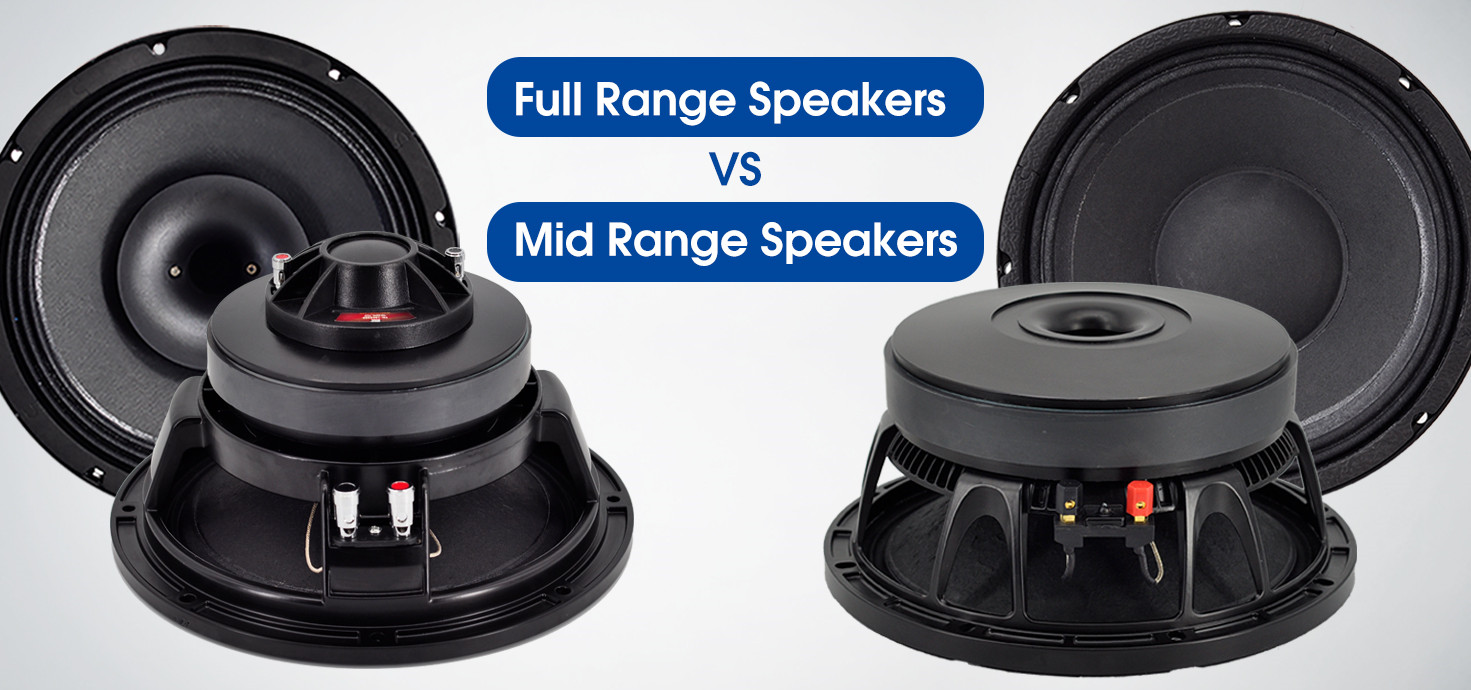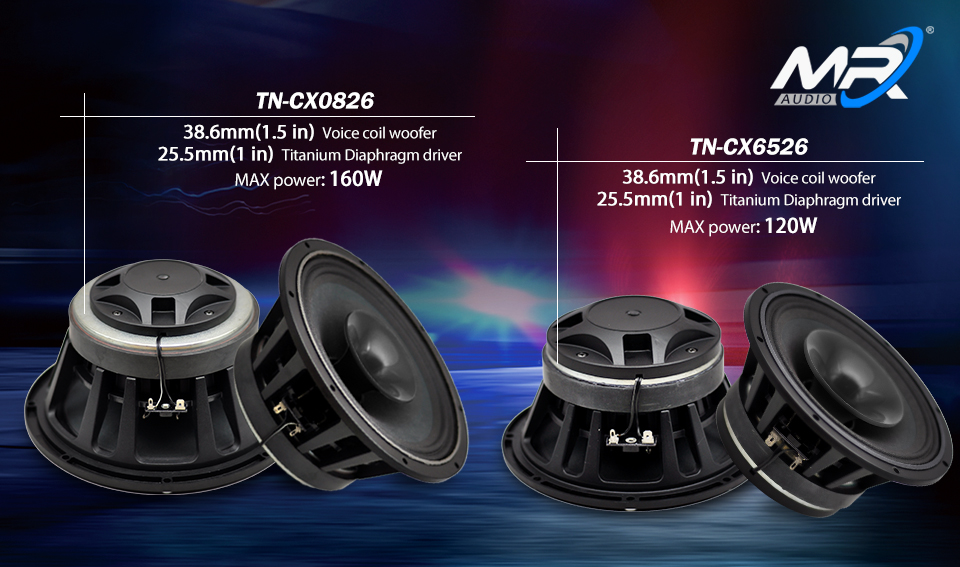
Mid-range speakers and full-range speakers are two key components in the audio system. They each have different positioning and uses in the audio system. Mid-range speakers focus on clear and accurate reproduction of the mid-range, while full-range speakers attempt to cover the entire audio frequency range as broadly as possible, with more versatility. When selecting speakers, it is important to select the appropriate speaker type based on specific needs and performance criteria to ensure the best possible audio experience.

Advantages and disadvantages of full-range speakers:
Advantages: Full-range speakers were once considered the most reasonable speaker structure. Generally, full-range speakers do not have a frequency divider inside. Without a frequency divider, there will be no phase distortion, because the capacitance inside the frequency divider has a certain impact on the phase.Many manufacturers have to find ways to correct some phases. Whether it is moving the unit back and forth or making subtle adjustments to the frequency divider, it requires a lot of work. The first feature is that it does not have a crossover. Resulting in no phase distortion. Secondly, because it does not have a crossover inside, the power amplifier can be driven better, which means it has stronger control and can release all the power of the power amplifier.
The third characteristic is that it is a point source, the sound is emitted from one speaker, so its diffusion is relatively good, and if it is multiple units, for example, one form is a line array speaker with a series of speakers, this kind of speaker will have sound wave interference between other speakers, and even some frequencies will cancel out. However, the full-range speaker has just one unit and does not have this problem, that is, it has no interference between sound waves and the diffusion is relatively small. Okay, the last point is that since there is no frequency divider, its efficiency is the highest and its sensitivity is relatively high. Therefore, in general, the full-range end element has high sensitivity and is easy to drive. It can be driven by a low-power amplifier.
Disadvantages: If a full-range speaker wants to produce high treble, it needs to be a light and small vibrating cone. However, if it is light and small, its low-frequency performance is not good enough, so the sound you hear is relatively flat and three-dimensional. Not that strong. However, the diameter of the full-frequency unit will be limited. A large diameter will have a certain impact on the high-frequency extension. Not only the area of the basin. But also the elastic wave will have a certain impact on the sound, so there are many contradictions that need to be resolved. Balance.
What are midrange speakers?
Speakers that mainly play mid-frequency signals are called mid-range speakers. The mid-frequency range is usually from 300 hertz (hz) to 2000 hertz (hz). This is the sensitivity range of the human auditory system to sound, so mid-range speakers have higher sound quality requirements. The mid-frequency unit is usually located between the woofer and the tweeter and plays a connecting role to ensure that the sound is balanced and clear in the mid-frequency range. As a mid-range speaker, the main performance requirements are flat sound pressure frequency characteristic curve, low distortion, good directivity, etc.
Full range speakers vs midrange speakers
Different frequencies
Full-range speakers: 20-10000 hz mid-range speakers: 300-2000 hz
Different uses
Full-range speaker: The human voice is restored to life, the tone is clean, powerful, and rhythmic.
Midrange speaker: It is not used alone, but is used in combination with tweeters and mid-range speakers to form a sound system. The sound produced is vibrating and has a low frequency, which makes people’s ears resonate and shock. It is used in ktv, bars, stages and other wide places.
Different designs
Full-range speaker: No crossover required, relatively high sensitivity
Mid-frequency speaker: The design of the mid-woofer speaker is mainly to pursue the required frequency range, so the sensitivity will be slightly lower
FAQs
1.Why are so many people keen on full-range speakers?
Because full-range speakers do not have crossovers, and crossovers are something that many manufacturers are constantly working on. Full-range speakers can cover the mid-range part with one speaker. There is no crossover in areas where our human ears are more sensitive, so we listen its sound is more realistic, more natural, more direct and more delicate. Its performance is very different from that of crossover speakers, which is its advantage.
2.What is the difference between full-range speakers and mid-woofer speakers?
The design of the full-range speaker is different, mainly to improve the sensitivity of the speaker, so its sensitivity will be higher. The design of the mid-woofer is mainly to pursue the required frequency range, so the sensitivity will be slightly lower. The full-range speaker has better vocal reproduction, realistic vocals, and clean timbre. Mid-bass speakers are generally used in conjunction with tweeters, which can be matched according to individual needs and require relatively high technical requirements.
